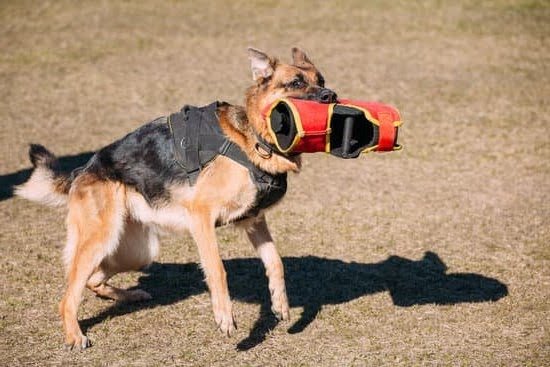Are you an avid kayaker who wants to bring your furry friend along for the ride? In this article, we will explore how to train a dog to ride in a kayak. Many dog owners enjoy outdoor activities with their pets, and kayaking can be a great way to bond with your four-legged companion. However, it’s important to ensure that your dog is comfortable and safe while on the water.
Kayaking with your dog can provide numerous benefits for both you and your pet. It can be a fun way to exercise, explore new places, and strengthen your bond. Not only does it provide physical activity for both you and your dog, but being out on the water can also be mentally stimulating for them. However, before you hit the water with your canine companion, it’s essential to prepare them for the experience.
Understanding your dog’s behavior and comfort level with water and new environments is crucial before embarking on a kayaking adventure together. Some dogs may naturally take to kayaking, while others may need more time and training to feel at ease in this new environment. By assessing your dog’s comfort level and behavior around water, you can better prepare them for the experience of riding in a kayak.
Understanding Your Dog’s Behavior
Dogs, like people, have distinct personalities and preferences. Before attempting to take your dog out on a kayak, it’s important to assess their comfort with water and new environments. Some dogs are natural swimmers and love the water, while others may feel anxious or fearful in unfamiliar settings. It’s crucial to understand your dog’s behavior and temperament before introducing them to the kayak.
One way to assess your dog’s comfort with water is by observing their behavior at a local lake or beach. Does your dog eagerly jump into the water and enjoy swimming, or do they hesitate and show signs of distress? Additionally, how does your dog react to new environments?
Are they curious and adventurous, or do they display signs of anxiety or fear? Understanding these aspects of your dog’s behavior will give you insight into how they may respond to being on a kayak.
It’s also important to consider any previous experiences your dog may have had with water or new places. If your dog has had positive encounters with bodies of water in the past, they may be more likely to enjoy riding in a kayak. On the other hand, if they’ve had negative experiences such as fear-based reactions or trauma related to water, you’ll need to approach the training process with extra care and patience.
| Understanding Your Dog’s Behavior | Assessing Their Comfort |
|---|---|
| Dog’s behavior at local lake or beach | Observation of eagerness or distress |
| Dog’s reaction to new environments | Assessment of curiosity or anxiety |
| Dog’s previous experiences with water | Evaluation of positive or negative encounters |
Preparing Your Dog
Introducing your dog to a new and unfamiliar environment like a kayak can be a daunting task, but with the right approach, it can also be an enjoyable experience for both you and your furry friend. By following these steps, you can help make the process of getting your dog comfortable in a kayak as smooth as possible:
1. Start with familiarizing your dog with the kayak on land: Before taking your dog on the water, allow them to sniff around and get used to the kayak while it’s still on dry land. This will help them become familiar with the boat and reduce their anxiety when it comes time to take it out on the water.
2. Short initial exposures: Initially, introduce your dog to the kayak in short bursts of time. Allow them to sit or stand in the kayak for a few minutes, then gradually increase the duration as they become more comfortable.
3. Use positive reinforcement: Reward your dog with treats, praise, and affection whenever they show curiosity or comfort around the kayak. This will create a positive association between your dog and the kayak, making them more willing to get in it in the future.
By taking these steps to introduce your dog to the kayak gradually and with patience, you can help ensure that they feel safe and secure when it’s time to hit the open water together.
Training Techniques
Building Confidence Step by Step
When it comes to training your dog to ride in a kayak, it’s important to start slow and build confidence gradually. Begin by introducing your dog to the kayak on land. Allow them to sniff around and explore the kayak at their own pace.
Once they seem comfortable, you can move on to the next step of introducing them to the water while being near the kayak. This gradual process will help reduce any anxiety your dog may have about the new environment.
Practice Stability and Balance
Once your dog is comfortable with the kayak in or near the water, it’s time to practice stability and balance. Start by having your dog sit or lie down in the kayak on dry land. Use treats or toys to encourage them to remain calm and still while inside the kayak. Progress to gently rocking the kayak back and forth while giving your dog plenty of reassurance and rewards for maintaining their composure.
Positive Reinforcement Training
Utilize positive reinforcement techniques during each training session. When your dog exhibits calm behavior or remains balanced in the kayak, reward them with praise, treats, or toys. Positive reinforcement helps create a positive association between being in a kayak and receiving rewards, making it more likely that your dog will continue displaying desirable behavior during future kayaking adventures.
By employing these training techniques, you can help your dog feel confident, calm, and balanced during kayak rides, ensuring an enjoyable experience for both you and your furry friend.
Safety Measures
When it comes to including your furry friend on kayaking adventures, their safety should always be a top priority. Here are some important safety measures to ensure your dog’s safety while kayaking:
1. Life Jackets: Just like humans, dogs should also wear a life jacket while on the water. Make sure to choose a life jacket specifically designed for dogs and ensure that it fits properly. This will provide buoyancy and keep your dog safe in case of any mishaps.
2. Secure Harness: A secure harness is essential to keep your dog safely in the kayak. Look for a harness that attaches to the kayak or has a handle for easy lifting in and out of the water. Additionally, it’s important to train your dog to be comfortable wearing the harness before taking them on kayak rides.
3. Sun Protection: Dogs can also get sunburned, especially if they have light or thin fur. Consider using pet-safe sunscreen on areas with less fur, such as their belly and nose. Providing shade with an umbrella or canopy can also protect your dog from direct sunlight during long outings.
By implementing these safety measures, you can ensure that your dog has a safe and enjoyable experience while kayaking with you. Prioritizing their safety will allow you both to enjoy many more adventures on the water together.
Choosing the Right Gear
When it comes to training your dog to ride in a kayak, choosing the right gear is essential for ensuring their safety and comfort. One of the most important pieces of gear is a well-fitted harness that will allow you to secure your dog in the kayak and provide control during the ride.
Look for a harness specifically designed for use in water sports, as these are often made with quick-drying materials that are comfortable for your dog to wear.
Another crucial piece of equipment is a life jacket designed for dogs. Just as humans need life jackets for safety on the water, dogs also require this essential gear to ensure their security while kayaking. Be sure to choose a life jacket that fits your dog properly and has reflective patches for added visibility in low light conditions.
In addition to harnesses and life jackets, there are other items you may want to consider when outfitting your dog for kayaking. A non-slip mat can be placed in the kayak to provide traction and stability for your dog. You may also want to bring along some familiar toys or blankets to help keep your dog calm and comfortable during the ride.
| Gear | Description |
|---|---|
| Harness | A well-fitted harness designed for water sports |
| Life Jacket | A properly fitting life jacket with reflective patches |
| Non-Slip Mat | To provide traction and stability for your dog |
Practice Makes Perfect
Building Positive Associations
One of the most important aspects of training your dog to ride in a kayak is to build positive associations with the experience. Start by allowing your dog to explore the kayak while it is on land. Encourage them to sniff around and get comfortable with this new object in their environment. You can also place treats and toys inside the kayak to entice your dog to climb in and associate it with a positive experience.
Gradual Introduction to Water
If your dog is not comfortable with water, it’s important to gradually introduce them to this new element before attempting a kayak ride. Begin by taking them for short walks near bodies of water or allowing them to play near shallow areas. Over time, slowly introduce them to deeper water, always ensuring that they feel safe and secure during the process.
Short Trips and Positive Reinforcement
When you are ready to take your dog on their first kayak ride, start with short trips close to shore. Gradually increase the duration and distance of your rides as your dog becomes more comfortable. Throughout the journey, provide plenty of praise, pets, and treats to reinforce positive behavior. It’s important for your dog to feel that being in the kayak is a fun and rewarding experience, making them more willing to continue these adventures in the future.
Enjoying the Experience
In conclusion, training your dog to ride in a kayak can be a rewarding experience for both you and your furry friend. By following the steps outlined in this article, you can ensure that your dog feels comfortable and safe while out on the water with you. It is important to remember that every dog is different, so patience and consistency are key when it comes to training them for this new adventure.
Rewarding your dog for positive behavior during kayak rides is essential for reinforcing their good habits. Whether it’s with treats, praise, or extra playtime, showing your dog that they have done well will help them associate kayaking with a positive experience. This will also build their confidence and trust in you as their owner.
Remember to always prioritize safety by investing in the right gear such as a harness and life jacket for your dog. Additionally, gradually building their confidence through practice and taking small steps towards longer kayak rides will ensure that they feel comfortable and secure. With time and dedication, you and your dog can enjoy many memorable adventures together on the water.
Frequently Asked Questions
How Do I Get My Dog Used to Kayaking?
To get your dog used to kayaking, start by allowing them to explore the kayak on land. Gradually introduce them to short rides in calm waters, rewarding them with treats and praise for calm behavior. It’s important to make the experience positive for your dog by taking it slow and being patient as they adjust to this new activity.
Is It Hard to Kayak With a Dog?
Kayaking with a dog can be challenging at first, especially if your dog is not used to being on the water or in a confined space like a kayak. However, with proper training and acclimation, many dogs can become comfortable and even enjoy kayaking.
It’s essential to ensure your dog’s safety by using a properly fitted life jacket and practicing in calm waters.
Will My Dog Sit in a Kayak?
Whether or not your dog will sit in a kayak depends on their individual temperament and comfort level with being on the water. Some dogs may take naturally to sitting in a kayak, while others may need more time and patience to adjust.
Using positive reinforcement, patience, and gradually introducing them to the kayak can help encourage them to sit calmly during kayaking trips.

Welcome to the blog! I am a professional dog trainer and have been working with dogs for many years. In this blog, I will be discussing various topics related to dog training, including tips, tricks, and advice. I hope you find this information helpful and informative. Thanks for reading!





